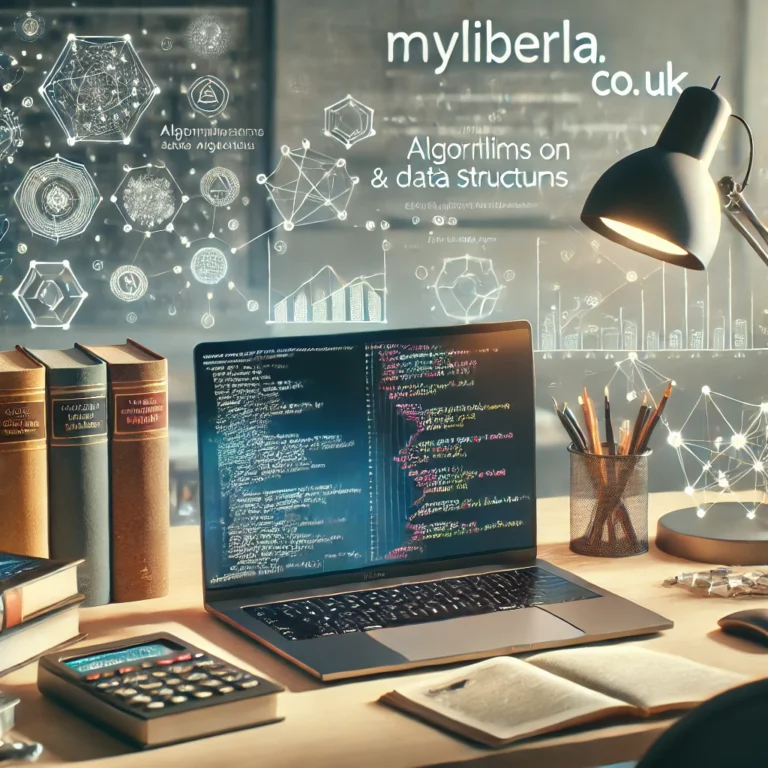Mastering the Algorithms and Computing Theory PACE Final Exam: A Comprehensive Guide
The Algorithms and Computing Theory PACE final exam is an essential checkpoint for students delving into computer science. This exam evaluates your grasp of algorithmic thinking, computational complexity, and theoretical principles that underpin modern computing. While the subject matter may seem challenging, a structured approach can make preparation more manageable and even enjoyable.
This guide explores everything you need to know about the exam, from key topics and preparation strategies to exam-day tips and recommended resources.
Understanding the PACE Final Exam
The Algorithms and Computing Theory PACE final exam isn’t just a test of knowledge—it measures your ability to apply computational concepts to solve problems effectively. It typically includes:
- Algorithm Design and Analysis
- Sorting algorithms: QuickSort, MergeSort, and BubbleSort.
- Searching techniques: Binary search, depth-first search (DFS), and breadth-first search (BFS).
- Dynamic programming problems like the Knapsack problem and Longest Common Subsequence.
- Computational Complexity
- Big-O, Big-Theta, and Big-Omega notations for analyzing algorithm performance.
- Time-space tradeoffs and their impact on program efficiency.
- Complexity classes like P, NP, and NP-complete.
- Data Structures
- Linear data structures: arrays, linked lists, stacks, and queues.
- Hierarchical structures: trees (binary trees, AVL trees) and graphs (directed and undirected).
- Hash tables and their applications in real-world problem-solving.
- Theory of Computation
- Understanding finite automata, regular expressions, and context-free grammars.
- Exploring Turing machines as a model for computation.
- Studying the halting problem and its implications for algorithm limits.
Effective Preparation Strategies
1. Break Down the Syllabus
Start by reviewing your course materials to identify the most critical topics. Prioritize areas with higher weightage in the Algorithms and Computing Theory PACE final exam and focus on understanding rather than rote learning.
2. Use Visual Aids
Algorithms and data structures can be easier to comprehend when visualized. Tools like Flowcharts, dry runs, and step-by-step breakdowns can clarify how an algorithm functions.
3. Leverage Online Platforms
Solve algorithmic problems on platforms like:
- LeetCode: Offers curated problem sets aligned with academic exams.
- GeeksforGeeks: Great for learning algorithms through tutorials and examples.
- HackerRank: Provides challenges to test your theoretical and practical knowledge.
4. Work Through Examples
For theoretical concepts, work through real-world examples. For instance:
- When studying sorting algorithms, try sorting a set of numbers manually.
- For graph algorithms, draw a network and simulate traversal techniques like BFS or DFS.
5. Practice Mock Exams
Simulate the test environment by timing yourself while solving sample questions. This helps improve your speed and highlights areas that need more attention.
Key Exam-Day Strategies
On the day of the Algorithms and Computing Theory PACE final exam, keep these strategies in mind:
- Start with What You Know
Begin with questions you’re confident about to build momentum and save time. - Plan Your Approach
For algorithm-related questions, write pseudocode or an outline before diving into the actual implementation. This prevents errors and keeps your solutions organized. - Focus on Complexity
Always aim for the most efficient solution. While brute-force methods may work, they’re often penalized for inefficiency. - Time Management
Divide your time wisely among all questions. Don’t spend too long on a single problem; move on and come back later if needed.
Useful Resources
Books
- Introduction to Algorithms by Cormen, Leiserson, Rivest, and Stein (CLRS): A must-have for any computer science student.
- Algorithm Design by Jon Kleinberg and Éva Tardos: Focuses on the art of designing efficient algorithms.
Online Tutorials
- Khan Academy: Excellent for understanding computational theory concepts.
- Coursera: Offers courses specifically on algorithms and computing theory, often with video lectures and quizzes.
Interactive Tools
- VisuAlgo: Visualizes data structures and algorithms interactively.
- Big-O Cheat Sheet: Summarizes complexities of common algorithms.
Advanced Tips for Success
- Engage in Group Discussions
Collaborate with classmates to discuss difficult concepts, such as NP-complete problems or recursion. Peer learning can provide fresh perspectives. - Seek Help from Professors
If you’re struggling with a topic, don’t hesitate to ask your instructors for guidance. - Review Past Exams
Practice with previous years’ Algorithms and Computing Theory PACE final exam papers to understand the question pattern and difficulty level. - Stay Consistent
Consistency is key. Dedicate a set amount of time daily to studying algorithms and computing theory to ensure steady progress.
Why This Exam Matters
The Algorithms and Computing Theory PACE final exam doesn’t just test your academic knowledge—it equips you with problem-solving skills that are vital in real-world applications. Whether you’re aspiring to be a software developer, data scientist, or researcher, the concepts you master here will serve as the foundation of your career.
Conclusion
Preparing for the Algorithms and Computing Theory PACE final exam can be challenging but incredibly rewarding. By breaking down the syllabus, practicing regularly, and utilizing available resources, you can master the subject and excel in the exam.
Remember, the key to success is not just memorization but understanding how to apply theoretical concepts to practical problems. Start early, stay consistent, and believe in your ability to tackle even the toughest challenges.
Good luck as you embark on this journey to conquer the Algorithms and Computing Theory PACE final exam!
Frequently Asked Questions (FAQ) on the Algorithms and Computing Theory PACE Final Exam
1. What topics should I focus on for the Algorithms and Computing Theory PACE final exam?
For the Algorithms and Computing Theory PACE final exam, focus on algorithm design and analysis (sorting, searching, dynamic programming), computational complexity (Big-O notation, time-space tradeoffs), data structures (arrays, trees, hash tables), and theory of computation (finite automata, Turing machines). Prioritize the topics emphasized in your course materials and practice consistently with real-world problems.
2. How can I effectively prepare for the PACE final exam?
Start by reviewing your class notes and textbooks, breaking down the syllabus into manageable sections. Use online platforms like LeetCode, GeeksforGeeks, and HackerRank to practice solving algorithmic problems. Also, work through examples and engage in group study sessions to clarify complex topics. Don’t forget to take mock exams to simulate the real test environment.
3. What resources should I use to study for the exam?
Books like Introduction to Algorithms by Cormen et al. and Algorithm Design by Jon Kleinberg and Éva Tardos are great starting points. Online platforms like Khan Academy, Coursera, and VisuAlgo offer interactive lessons and tutorials on algorithms and computational theory. Use a Big-O cheat sheet to quickly reference algorithm complexities.
4. How important is time management during the exam?
Time management is critical in the Algorithms and Computing Theory PACE final exam. Begin with questions you’re confident about to build momentum, and allocate time wisely among all questions. If you get stuck on one problem, move on to others and return to it later. Pacing yourself helps ensure you can complete the exam within the allotted time.
5. How can I improve my understanding of complex topics like NP-complete problems?
Tackle complex topics like NP-complete problems by breaking them down into simpler concepts. Discuss these topics with classmates or professors for different perspectives. Study real-world examples and work through problems to see how they apply to practical situations. Engaging in peer learning and using interactive tools can also be beneficial.
6. What should I do the night before the exam?
The night before the Algorithms and Computing Theory PACE final exam, review key concepts and formulas but avoid cramming. Focus on understanding core ideas rather than memorizing facts. Get a good night’s sleep to ensure you’re well-rested and mentally prepared for the exam.
7. How do I handle a difficult problem during the exam?
If you encounter a difficult problem, stay calm. Read the question carefully and plan your approach before attempting a solution. If you’re stuck, move on to other questions and come back later with fresh eyes. Sometimes, stepping away from a challenging problem can lead to new insights.
8. What is the best way to handle algorithm design questions?
For algorithm design questions, always start with pseudocode or a high-level outline of your solution before coding. This helps you organize your thoughts and ensures a structured approach. Focus on designing efficient algorithms with optimal time and space complexity, and validate your approach with dry runs.




